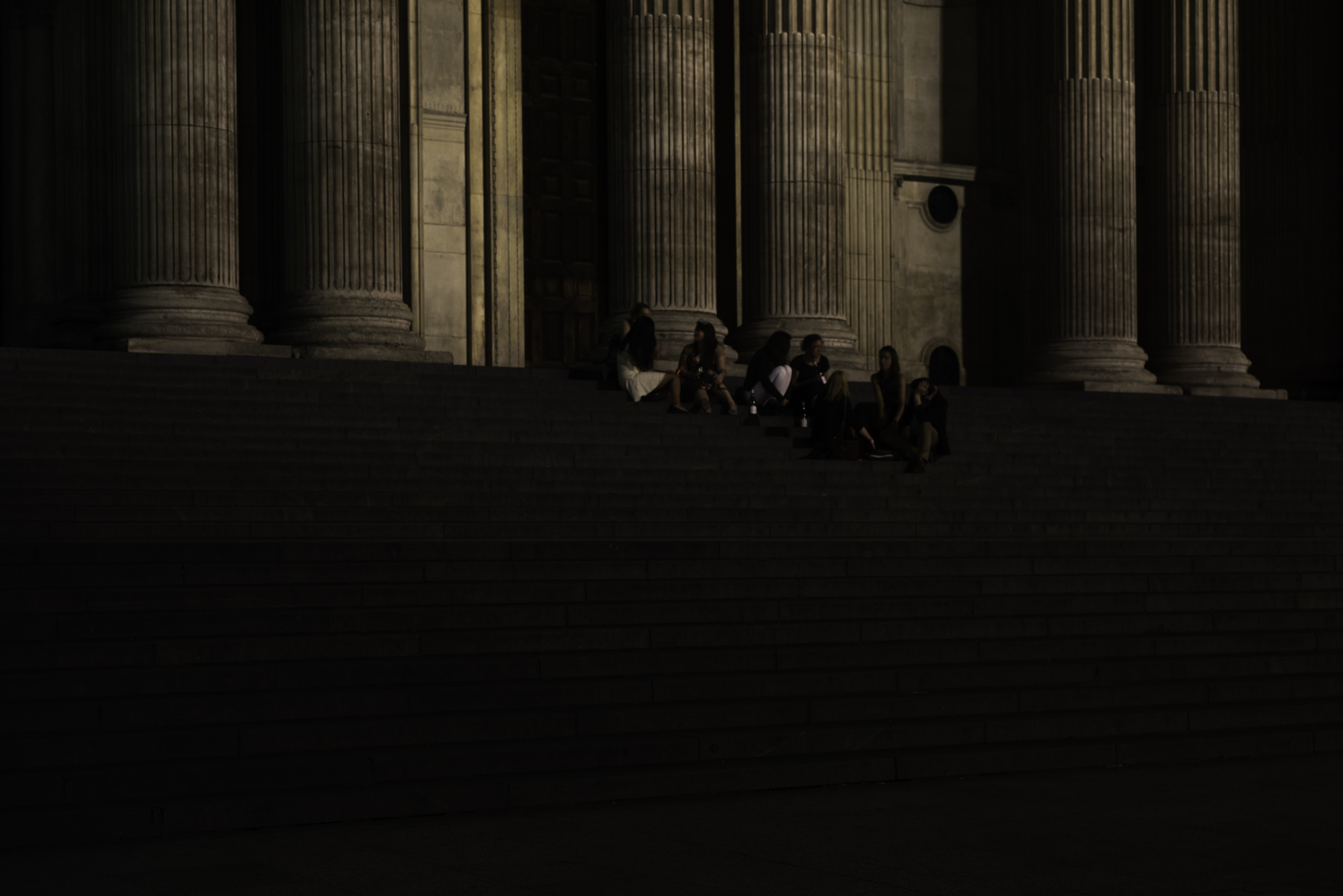
Some useful words:
Allegory – using the veneer of one narrative to disguise the meaning of another.
Ambiguity – deliberately cryptic or inexact expression
Anchoring – the physical and metaphysical rooting of a building to the context of its setting.
Articulation – to clearly constitute the parts that constitute the whole
Balance – equivalence of balance can be achieved in two ways: symmetrically (axial balance) and asymmentrically (counterbalance)
Chora – is a concept of an invisible, indeterminate receptacle or place.
Closure – as part of Gestalt theory, where we fill in or optically close incomplete information
Coda – concluding experience of a journey though a building. An entrance experienced in the opposite direction
Complexity – intricacy, elaboration, convolution and multiplicity
Composition – a vehicle for bringing order to chaos
Contrast – scales of which are the essential force in the articulation of ideas
Edge Condition – is a place of tension, of intensification and conflict. forest/field
Water/land
Elegance – going beyond appearance to the essence of the thing itself
Framing – contain order and systematize their contents
Interaction – dialogue and interchange
Intersection
Intervention – the impact architecture has on its context
Juxtaposition – the placing of elements side by side to invite an interaction
Layering – the conscious expression of a series of layers of space or materials
Linearity – the dominating directional dynamic, either individual or multiple lines of force
Locus – is the focal point, an exact place
Mediate – resolving programmatic conflict by transforming ‘problems’ into design opportunities
Module – a unit used in construction, ranging from a brick to a space module/pod
Nodes – one of five elements described by Kevin Lynch in his Image of the City: ‘paths’, ‘edges’, ‘districts’, ‘landmarks’ and ‘nodes’. Intersections, concentrations or the clear articulation of a coupling device
Paradox – Architecture is, by necessity, both poetic and pragmatic
Parameters – In architecture: literally a boundary. Parameters are embodied in natural laws, regulations, client expectations and our own lack of imagination in decreasing order of rigour.
Porosity – Discussed by Walter Benjamin when describing city characteristics, such as social, spatial and temporal organization. As one thing permeates another, merging old with new, interior and exterior, and the diffusion of public and private. Urban indeterminism…
Proportion – The relationship of things to each other, or parts of a thing in relation to the whole.
Reciprocity – the state in which the part and the whole define (and re-define) each other.
Punctum – Is a cut or point of incision into an existing formal condition which brings new and often unintended meaning and reorientation in the viewer
Resolved – the state when the identity of the whole of a design is present in its parts, and the parts exhibit a unifying presence in the whole
Rhyme – in architecture the repetition of a similar motif
Rhythm – buildings have been alluded to as ‘frozen music’. Regular or irregular repetition – their variation evoking an image of musical time
Skin – refers to the external façade or outer layer of a building, can also refer to the inner lining to hide or reduce the effect of a crude construction
Spatiality – the void, the nothingness, the ‘in between’ that when bought into existence and given shape by the solids that define its limits becomes invested with its own apparent qualities
Stasis – the dynamic of architecture is driven by the tension between stasis and movement
Symmetry – in its ancient sense, the term meant harmony, not the mirror-like connotations the word holds today
Tactility – refers to a texture that can be experienced both physically and visually
Telos – architecture adapted ‘Telos’ to mean becoming rather than being. Working toward an end rather than the final resolution
Temporality – the ephemeral, the transitory and the evanescent caught up in the moment. The past and present do not denote two temporal segments but two coexisting conditions, the present which continually passes and the past which is also continuous and through which all presents have passed
Threshold – an architectural element with deep social and emotional significance. It acts as a transition zone between outside and inside, as an idea of ‘entering’ a different space
Transition – is a shift from one place, state or condition to another (Transitional space)
Transformation – concerns change in the nature, function or condition of things. It is the name of the architectural game. Converting ideas into representations of themselves giving substance to the abstract and indeterminate – what is designed in 2D space is realized as a 3D structure
Transparency – to reveal underlying structural detail. Often used to create ambiguity rather than clarity.
xyz space – defined by first and third angle projection, plan, section and elevation suspended in a glass box. (point, line, plane and solid). Our eyes have been taught to recognized the third dimension in nature and such learning blindfolds us to other ways of seeing and portraying space. (Donald Kunze)